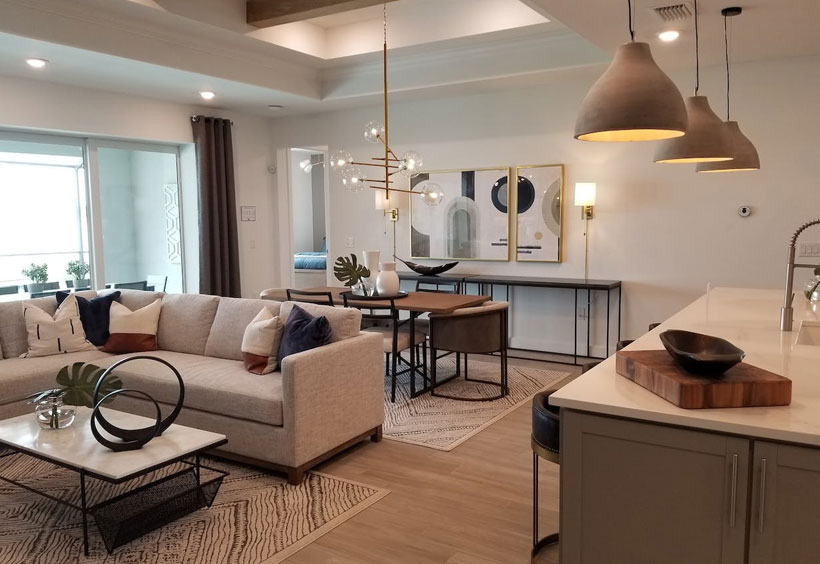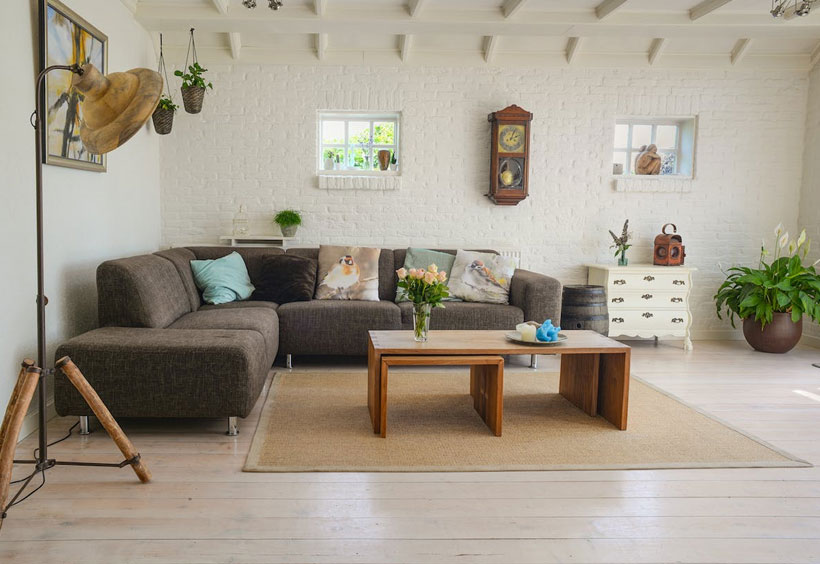How to Start a Home Staging Business
Sparkpush Editorial Team
Updated January 10, 2024
Edited by: Mike Shelby

Hey there, aspiring entrepreneurs! Have you ever walked into a beautifully staged home and thought, “I could do this”? If you have an eye for design and a knack for turning spaces into showcases, starting a home staging business might just be your calling. Let’s dive into what it takes to launch a successful home staging venture. It’s not just about fluffing pillows; it’s about creating a vision that sells homes!
Step 1: Understanding the Home Staging Industry
Welcome to the world of home staging, where your creativity meets savvy marketing! Home staging isn’t just about making spaces look pretty; it’s about strategically dressing a house to make it irresistible to buyers. It’s an art form that combines interior design with real estate psychology. Your goal? To create a space that potential buyers can envision as their future home.
This industry is more nuanced than it appears. It requires a keen understanding of current real estate market trends and the specific desires of home buyers in your area. Are they looking for a modern, minimalist look, or something warm and family-friendly? Every market has its unique flavor.
Research is key. Dive into the demographics of your target area. Are you catering to young professionals, families, or retirees? Understanding your audience helps tailor your staging designs to appeal to their tastes and needs.
Remember, home staging is about selling a lifestyle, not just a space. You’re not just arranging furniture; you’re crafting an environment that boosts a property’s appeal, potentially leading to quicker sales and higher bids. It’s about striking the right balance between a clean, attractive aesthetic and a welcoming, lived-in feel.
Embrace this first step with enthusiasm. With a solid grasp of the home staging industry, you’ll be well on your way to transforming spaces and perceptions.
Step 2: Pros and Cons of Home Staging Business
Ready to start on a home staging business journey? Let’s weigh the pros and cons to see if it’s the right fit for you. Here’s a snapshot to help you decide:
Pros:
- Creativity at Play: If you have a flair for interior design, this business lets your creativity shine. You’ll be transforming spaces and bringing visions to life.
- Flexibility: This career offers flexibility in terms of working hours and project choices. It’s perfect for those seeking a balance between personal and professional life.
- Market Demand: With real estate always evolving, there’s a consistent demand for skilled home stagers. This means a steady stream of potential projects.
- Satisfaction: There’s immense satisfaction in helping homeowners sell their property swiftly and profitably, thanks to your staging skills.
Cons:
- Initial Investment: Starting up requires investment in decor, furniture, and possibly storage space. It can be substantial, depending on how extensive your services are.
- Inconsistent Income: Like many entrepreneurial ventures, income can fluctuate. Busy months might be followed by slower periods.
- Physical Work: Home staging involves a lot of physical work – moving furniture, painting, and more. It can be demanding and requires good physical health.
- Real Estate Market Dependency: Your business is closely tied to the real estate market, which can be unpredictable. Economic downturns can significantly impact your workflow.
Weighing these aspects will help you gauge if starting a home staging business aligns with your career aspirations and lifestyle.
Step 3: Crafting Your Business Plan
Starting a home staging business without a solid plan is like navigating a ship without a compass. Let’s sketch out a roadmap for your entrepreneurial journey.
First, pinpoint your mission. What’s driving you? Is it transforming spaces, helping homeowners make a sale, or a passion for interior design? This mission will be your guiding star.
Next, zone in on your target market. Are you aiming for high-end luxury properties, charming suburban homes, or compact urban condos? Each niche has its own demands and opportunities. For instance, luxury homes might require a sophisticated touch, while condos need clever use of space.
Now, let’s talk goals. Set realistic, achievable targets. Maybe it’s staging ten homes in your first year or securing a partnership with a local real estate agent. Whatever it is, make sure it’s measurable and time-bound.
Don’t forget the financials. Budgeting is key. Factor in the costs for furniture, decor, marketing, and any other overheads. How much will you charge for your services? Ensure your pricing aligns with market rates but also covers your costs and desired profit margin.
Lastly, consider the legalities. Will you operate as a sole proprietor, or form an LLC? Get these legal ducks in a row to protect your business and personal assets.
In essence, your business plan is the blueprint for your home staging venture. It’ll help you stay focused, organized, and prepared for the challenges and triumphs ahead.
Step 4: The Legalities – Getting Your Business Legit
Alright, it’s time to get down to the nitty-gritty of making your home staging business official. You’ll be dealing with real estate and people’s homes, so let’s ensure everything is above board.
First up, pick your business structure. Are you going solo as a sole proprietor, or do you see yourself building a team and opting for an LLC? Each has its pros and cons, especially when it comes to taxes and liability. An LLC can offer personal asset protection, which is handy in a field where you’re dealing with high-value properties.
Next, it’s time to register your business name. Choose something catchy, but also professional. This name will be your brand, the first impression clients get, so make it count.
Now, onto licensing. The requirements can vary from state to state, so check with your local government about what’s needed for a home staging business. It could range from a general business license to more specific permits.
Insurance is non-negotiable. You’ll be in and out of clients’ homes, handling furniture and decor, so liability insurance is crucial. It protects you if something gets damaged. Also, consider insurance for any inventory you might own.
Getting these legal aspects sorted might seem tedious, but they’re vital for a smooth, stress-free operation. Once you’ve got this foundation laid, you’re ready to launch your company with confidence.
Step 5: Gather Your Toolkit – Essential Supplies and Contacts
Okay, now for the fun part – gathering your home staging toolkit! This step is all about blending your design talent with the right tools and connections.
First up, your inventory. Think stylish and versatile furniture, tasteful art pieces, and accessories that can transform any space. But here’s a tip – you don’t need to break the bank buying everything. Partner with furniture rental companies. It’s cost-effective and lets you offer a variety of styles to clients.
Next, let’s talk relationships – the backbone of your business. Networking is everything in home staging. Get to know real estate agents in your area; they can be your biggest source of referrals. Attend local real estate events, join online forums, or even drop by their offices with a well-crafted portfolio of your work.
Don’t overlook the power of a good photographer. Beautiful photos sell homes and your staging, so team up with a photographer who can capture the essence of your work in every shot.
Finally, stay on top of trends. Home staging is not just about making a space look pretty; it’s about selling a lifestyle to potential buyers. Keeping up with interior design trends and understanding what appeals to buyers in your market will set you apart.
With a solid toolkit of supplies and contacts, you’re ready to turn houses into homes that sell. Let’s get staging!
Step 6: Building a Portfolio that Wows
Alright, let’s look into creating a portfolio that’ll leave your potential clients in awe. Think of your portfolio as your visual handshake; it’s often the first impression you make, so let’s make it count!
Start by staging homes for friends or family. Offer your services for free or at a discounted rate in exchange for the opportunity to build your portfolio. This real-world experience is invaluable. Alternatively, create stunning mock-up spaces in your own home. The goal here is to showcase your ability to transform any space into a buyer’s dream.
Now, let’s talk about presentation. High-quality photographs are non-negotiable. They need to capture the mood, the details, and the overall appeal of your staged spaces. Consider hiring a professional photographer or invest in a good camera and learn some photography basics.
Organize your portfolio to highlight different styles and types of homes you’ve staged. Include before and after photos to demonstrate your impact. And remember, your portfolio isn’t just a collection of images; it’s a storytelling tool. Each project should tell a story of transformation and appeal.
Upload your portfolio online, maybe on your website or a social media platform dedicated to your business. This accessibility makes it easy for potential clients to witness your magic touch from anywhere. Remember, your portfolio isn’t static. Keep updating it with your latest, greatest work. Let’s start staging and snapping.
Step 7: Pricing Your Services Right
Navigating the pricing maze can feel like a balancing act, right? You’ve got to hit that sweet spot where your services are both appealing and profitable. So, let’s break this down.
First up, do your homework. Research what local competitors are charging. This gives you a ballpark figure to work with. Are you aiming for high-end, luxury properties or cozy, family homes? Your target market will influence your pricing strategy.
Now, let’s talk value. Your skill, time, and the transformations you bring to a space are invaluable. When setting your prices, factor in not just the tangible costs like rentals and transport but also the intangible ones like your creative input and time spent planning.
Consider starting with a base rate and then add costs based on the size of the property, the extent of staging required, and any additional services like decluttering or renovations. Be transparent with your clients about what they’re paying for – no hidden surprises!
Avoid the trap of undervaluing your services just to snag more clients. Remember, quality over quantity. At the same time, keep your rates competitive to attract a steady stream of business.
Pricing is an art – one that evolves. Be open to adjusting your rates as you gain more experience and recognition in the field. Get this right, and you’re on your way to a thriving home staging business.
Step 8: Challenges and Triumphs: The Realities of Home Staging
Alright, let’s be real for a moment. Home staging isn’t just about creating pretty spaces – it’s a journey filled with its fair share of bumps and victories. Facing tough clients, tight deadlines, and challenging spaces can sometimes feel like navigating a minefield. But hey, that’s part of the thrill, right?
First, the tough bits. You might come across clients with sky-high expectations or properties that seem beyond redemption. Maybe there’s a room that’s just plain awkward or a home that’s seen better days. These are the moments that will test your creativity and problem-solving skills to the max.
But here’s the flip side – the triumphs. There’s an undeniable rush in seeing a once-drab space come to life with your touch. That moment when a property you staged gets snapped up quickly? Pure gold! Each challenge you overcome is a stepping stone to becoming more skilled, resilient, and confident in your abilities.
Remember, every successful transformation is a testament to your talent. So, celebrate those wins, big or small. Got a property sold over asking price? Give yourself a pat on the back. Learned something new from a tough project? That’s gold. Each success, each lesson learned, is shaping you into a top-notch home stager. Keep at it, and soon, the triumphs will far outweigh the challenge.
Step 9: Growing Your Business: Scaling Up Smartly
Now, let’s talk growth – the exciting phase where you take your home staging business to the next level. Once you’ve got your brand established and a portfolio that speaks for itself, it’s time to think bigger. But remember, smart scaling is key.
Consider expanding your team. Hiring skilled designers or assistants can help manage larger projects or multiple stagings simultaneously. This expansion not only increases your capacity but also brings fresh ideas and perspectives to your business.
How about sharing your expertise? Offering training workshops or mentorship programs can be a rewarding way to grow. You get to nurture new talent in the field and establish yourself as an authority in home staging.
Stay on top of interior design trends. Attend trade shows, read design magazines, and keep an eye on what’s hot in the home decor world. Adapting your style to current trends keeps your business relevant and appealing to a broader range of clients.
And don’t forget about technology. Utilizing social media for marketing, investing in good software for design and business management, and creating an engaging online presence can all play a significant role in your growth strategy.
Remember, scaling up should be a calculated and strategic move. Take it step by step, ensuring quality remains a top priority, and before you know it, your business will not just grow, but profit.
The Bottom Line
Learning how to start a home staging business is a journey filled with opportunities for creative expression and professional growth. It’s a path where your passion for design meets the practical needs of the real estate market. With dedication, hard work, and a focus on continuous learning and adaptation, your home staging business can flourish, transforming spaces and impacting lives. Embrace the challenges and triumphs, and remember, your unique vision and style are what will set your business apart in the dynamic world of home staging.









